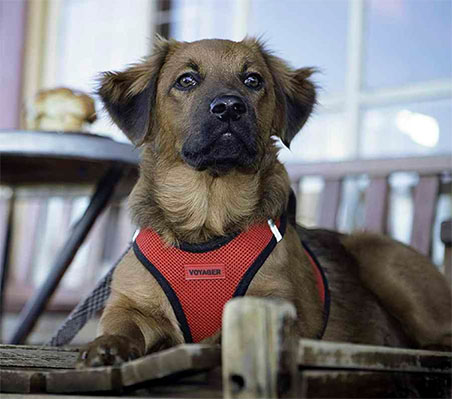How often do you walk your dog
- Last updated on February 1, 2023
- By: Caroline Stowe
When it comes to owning a pet, there is no doubt that having a dog is one of the most rewarding experiences you can have. From providing unconditional love and companionship to teaching us how to better care for others, dogs are truly man’s best friend.
But with this privilege comes responsibility; namely, making sure your pup gets enough exercise and fresh air every day. So how often should you walk your dog?
The answer depends on several factors, including the breed of your pup, age, size and health condition. Generally speaking, younger or smaller breeds require more frequent walks than older or larger ones due to their greater energy levels.
How many times should you walk your dog a week?
It’s important to remember that just like humans, dogs need regular exercise for both physical and mental health. Depending on your pet’s age, breed and activity level, the amount of walking should be adjusted accordingly – from once or twice a day for puppies to only once a week for senior dogs.
In addition to physical needs like exercise and mental stimulation (which both help keep them healthy), regular walks also give your pooch an opportunity to explore new places while getting some much-needed socialization time with other dogs as well as people they meet along the way.

The benefits of walking your dog regularly
Regular walks with your pup not only provide physical exercise but are also an important part of keeping them mentally healthy. Regular walking can help reduce anxiety, depression and stress in dogs.
In addition, it provides mental stimulation in the form of exploring new sights, smells and sounds which is necessary for their development. Finally, if you’re worried about your pet gaining too much weight (which can lead to serious health issues), daily walks can also help manage their weight and keep them trim.
When it comes down to it though – how often should you take Fido out for his daily strolls? Here are some tips on finding the right balance between giving him enough activity without overdoing it:
Puppies: New pups need frequent walks – at least once or twice every day. This will help them get used to their environment and bond with you. In addition, it’s a great way for them to learn basic commands like “sit” or “come” which are important for proper obedience training.
As your pup grows, the frequency of his activity can be reduced but not eliminated altogether.

Adult Dogs: If your pooch is already grown up, you should still take him out for regular walks (at least once a day) in order to keep him healthy and fit. But since adult dogs tend to have lower energy levels than puppies, you may walk three or four times a week for the less active breeds.
Senior Dogs: Senior pets require less frequent walks due to their age and health conditions. However, it’s still important for them to get some fresh air every day in order to prevent muscle atrophy and keep their joints flexible.
A 20-minute walk once a day should be enough exercise and mental stimulation for your senior pup – just make sure he’s not overdoing it!
No matter what type of dog you have, the key is to find the right balance between giving him enough activity while at the same time making sure he doesn’t overexert himself. At the end of the day, it’s important to remember that your pup is a living being with needs and desires – just like you!
Finally, if you ever find yourself feeling overwhelmed by having to take your four-legged friend out every day, there are plenty of resources available to help make life as a pet owner easier.
Dog walking services are popping up all over the place and can provide a convenient way for getting your pup some quality exercise time without having to worry about fitting it into your own hectic schedule.
How to choose the right dog walker
When looking for the right dog walker, it’s important to consider several factors such as experience, safety protocols and overall quality of service. Make sure to ask lots of questions before choosing the best one for your pup.
Here are some helpful tips for choosing a dog walker:
- Check online reviews and ask for referrals from other pet owners
- Ask about the walker’s experience with different breeds, ages, and abilities
- Ask for references from their past clients
- Ask what safety measures the walker takes when out on a walk (e.g. using leashes, avoiding busy roads)
- Visit the walking area to make sure it’s safe and secure for your pup
- Make sure the dog walker has insurance in case of any accidents or incidents
- Ensure that you can easily reach the dog walker if needed and get regular updates on your pup’s activities
- Have a conversation with the dog walker about your pet’s needs and any special instructions they might need to be aware of
With these tips in mind, finding a reliable and trustworthy dog walking service should be easy!
The Do's and Don'ts of walking your dog
Now that you know how often to walk your dog, here are some other tips for making sure everything goes smoothly:
Do’s:
– Make sure your pup is wearing a collar with an ID tag or harness. This can help keep him safe in case he gets lost during your walk.
– Bring water and treats with you on long walks to keep Fido hydrated and energized.
– Be aware of any potential hazards – like extreme temperatures or busy streets – along the route and adjust accordingly.
– Let your pup sniff around during the walk. This gives them the opportunity to explore and investigate their surroundings, which is both mentally stimulating and physically beneficial.

Don’ts:
– Don’t forget to pick up after your pup! Not only is this good manners, but it can also help prevent diseases from spreading through pet waste.
– Don’t overfeed before or after walks; wait until Fido has finished his activity before providing treats or food.
– Don’t pull on the leash – instead, use a gentle tug whenever he veers off course.
– And lastly, don’t forget to have fun! After all, that’s why you took him out in the first place.
Tools & supplies for an enjoyable and stress-free walk
To make sure your pup has the best walking experience, here are some tools and supplies that you should consider:
- Comfy collar or harness (depending on your dog’s size and activity level). We recommend using a no-pull dog harness if your pup tends to tend to pull a lot when they are excited.
- Leash – opt for a retractable leash if you plan to wander off the beaten path with Fido. Check out these quality dog leashes that we recommend.
- Poop bags – keep the environment clean and be a responsible pet owner
- Treats/water – pack a few treats to reward your pup and for long walks, bring a portable water bowl & bottle so your pup can stay hydrated and refreshed during his walk.
- GPS tracker – if you’re walking in an unfamiliar area, a GPS tracker can help you keep track of your pup’s whereabouts. Read more about GPS dog collars or GPS trackers here.
- Dog safety gear – depending on the terrain and weather conditions, you may want to consider investing in some protective items like reflective vests or booties. Check out our top picks on dog rainboots, dog summer shoes and dog winter/snow booties.

- Dog raincoat – if you live in a place where it rains frequently, having a raincoat for your pup can help keep them dry and comfortable during walks. Check out our top picks on stylish dog raincoats with hoods here.
- Dog sweater/coat – if you live in a colder climate, having a warm sweater or coat for your pup is essential to keep them cozy and comfortable during the winter months. Check out our top picks on the best dog coats and winter jackets here.
- Portable first aid kit – in case of any accidents or injuries, it’s always better to be prepared.
By taking the time to plan ahead and equip yourself (and Fido) with the right tools and supplies, you’ll be able to ensure a safe and enjoyable experience for both of you during your walks.
To get the most out of your daily walks, here are some helpful tips:
– Set realistic goals and make sure to stick to them. Even if you can’t walk every single day, aim to be consistent and increase the length or frequency of your walks as needed.
– Get creative! Take Fido on different routes or try activities like running or hiking together.
– Go exploring! Take advantage of any local parks or trails nearby and explore new areas with your pup.
– Mix it up! If you’re getting bored of the same routine, try adding some agility or obedience exercises into your walk to keep things interesting.
– Track progress. Using an app like MapMyDogWalk can help you set goals and track your progress over time.
Conclusion
In summary, while there is no one-size-fits-all answer to the question “how often do you walk your dog”, it’s important to understand that providing a pet with regular exercise and fresh air is essential for keeping them healthy and happy. If you’re ever in doubt about how often to take your pup out for a stroll, simply consult with your veterinarian.
The bottom line is that regular walks are not only good for your canine companion but also beneficial for you! So what are you waiting for?
Grab those leashes and go explore the great outdoors with your furry best friend! After all, there’s nothing quite like spending quality time with your furry best friend while enjoying the fresh air every day. Happy walking…
-
Author: Caroline Stowe
- Updated on February 1, 2023
Disclaimer: This article doesn’t intend to replace professional veterinary advice, nor should it be used as a substitute for veterinary services, diagnosis, or treatment. The content on this website, including information and opinions expressed herein, are intended for general informational purposes only. In case you have concerns or questions regarding your dog’s health and diet requirements, please consult your veterinarian before doing anything that might affect it.
DogPetGuide.com and the writer are not responsible or liable for any damage, liability, costs, or claims arising from any possible consequences of the reader’s action after reading this article.




